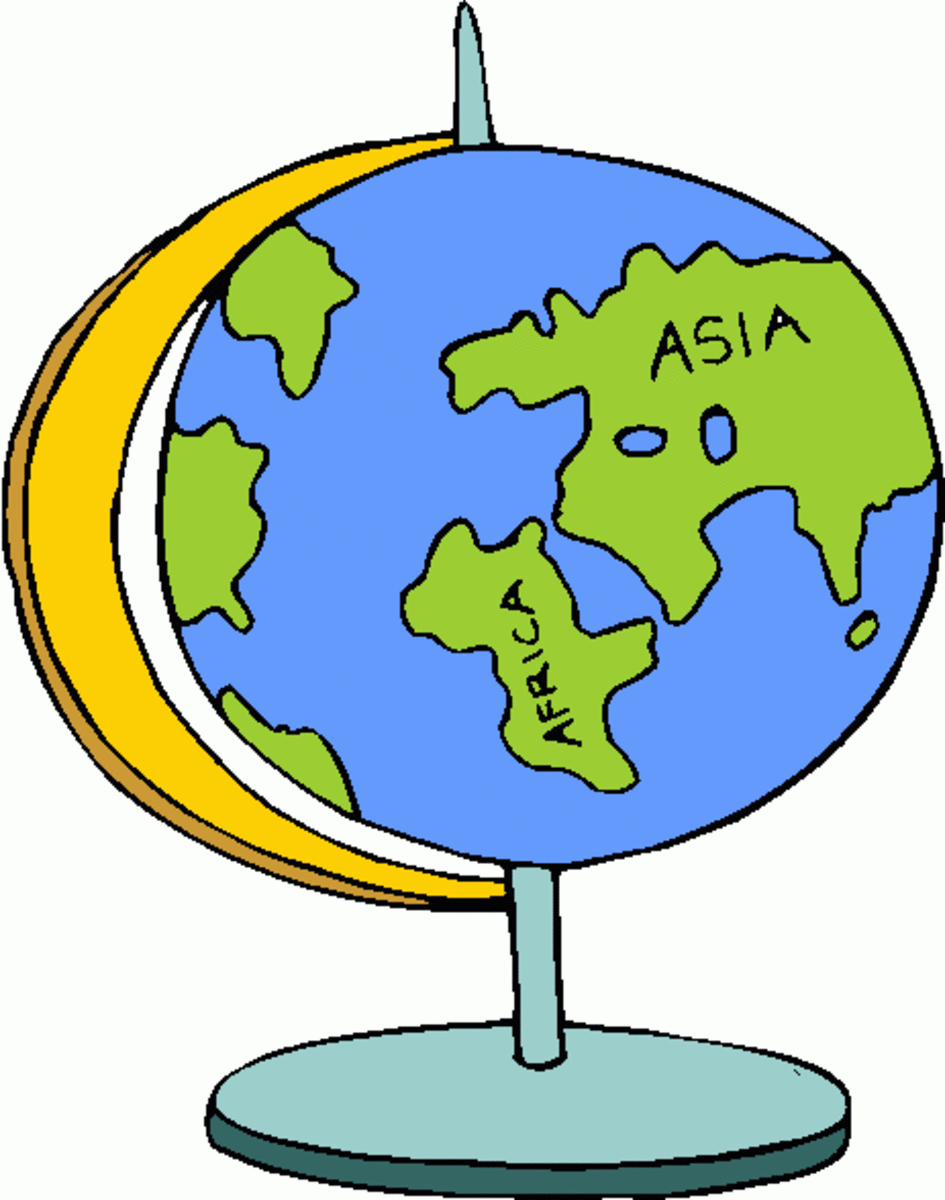My Unit 4, Edexcel, Geography A2, Exam Script (74/80 UMS) + Unit 4 Revision Guide Help + Generic Mark Scheme / DRACQ mar
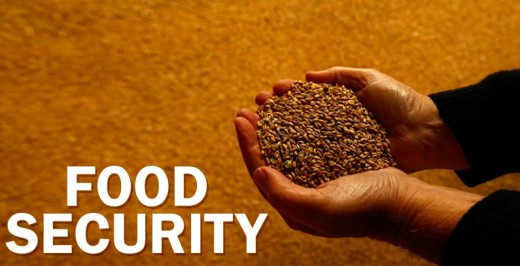
Overview
After completing my A-levels last year I understand the importance of exploiting all the resources available. However I lacked access to exam scripts so I have posted mine here to help you with Unit 4 Edexcel Geography.
Below is a copy of my June 2015 Edexcel GCE Unit 4 Geography paper where I chose option 3; Life on the Margins - The Food Supply Problem.
I achieved 74/80 UMS in this paper which contributed to an A* overall. I hope you can use both the script and supplementary information provided here to aid your revision. Good Luck!!
-------- EXAM SCRIPT IS AT THE BOTTOM OF THIS PAGE --------
Generic Mark Scheme - USE IT!
At every stage of your revision process for this exam you should look to the Generic Mark Scheme and aim to fulfil the top band criteria.
For more details on fulfilling these criteria Examiners reports should be used and thoroughly investigated to see exactly what the examiners are looking for.
The Generic Mark Scheme is shown segmented below to aid your revision understanding.
Also know as the DRACQ mark scheme.
My Revision Strategy
For me the key to this exam revolves around refining about 10 versatile case studies which relate highly to different points of the pre release guidance points.
However, don't use this as an excuse not to make any notes before the pre release comes out as you are always going to need to know:
- Definitions of key words/concepts; e.g. Food insecurity (Chronic, Acute and Transitory), Famine etc
- Key theories e.g. Malthus, Boserup, Neo-Malthusian, process of desertification, Dependancy Theory etc
- Key Composite indicators e.g. The Maplecroft index, Global Hunger index etc
- Along with other things you can start to prepare 3 or 4 case studies which you know to be highly versatile and therefore likely adaptable to any pre-release.
Your case studies should have some similarities and some differences i.e at a range of physical scales (Global, National & Local etc.), at a range of levels of development (MEDC, LEDC, BRICS, MINTS, RIC & NIC etc.), in this case a range of different types of food insecurity (chronic, acute, transitory, malnutrition, under nutrition, over nutrition & obesity etc) and a range of different causes of in this case food insecurity (war, famine, disease, desertification, Access, Availability, Apropriotness, Adequacy).
Methodology
When collecting your case studies, theories and definitions always be sure to keep a record of the source and also if you feel at the time that the source may be bias or incorrect then look for the information as peer reviewed primary data or from a reputable secondary source. You can talk about this process of weeding out bad sources in your methodology ("sampling/selecting") which will help contribute to you achieving the top (12-15) band in the research and methodology section of the Generic Mark Scheme.
When it comes to the Methodology it is an aspect of the report which you can (and I highly recommend that you do) pre plan and learn verbatim. You can then maximise marks on this section by having created a methodology which ticks all the boxes. In order to do this; write out your perfect methodology (by hand! the importance of this is key) and try to replicate it without looking, this may take you 10 - 15 attempts but once you've got it, you will be able to write twice as much high quality information as people who haven't done this.

After the Pre-release is released, if your teacher has not already done so, get your teacher to draft up some practice questions that you can start building plans for. In addition to this start thinking of your own potential questions and ask your teacher if they think they are reasonable and make plans for these.
I just used A4 sheets to create mind maps, i wouldn't put too much detail on these essay plan mind maps, rather I would refer to case studies and theories, for example; The DRC (democratic republic of Congo) and this would link to another mind map or set of notes I had made about the DRC.
Introduction
The Introduction, like the Methodology, is another part of the report which can also be pre-planned to a large extent in order to hit as many marking points as possible.
As stated in the GMS (Generic Mark Scheme) Accurate definitions of key terms are necessary and these can be memorised.
It is consistently stated in examiners reports that the best results come from a concepts based framework approach. In my case I used the 3 A's of food security as my concepts.
It is very important that within the Introduction you state what view this report will aim to support. This then creates the ability for a discussion/comparison/analysis to take place. It also means that in the conclusion you will have something to talk about.
It is important to give reasons for the use of case studies as these are used within the report to exemplify points made about your key concepts at different scales (as mentioned above). In my case I recognised that food insecurity exists at both ends of the nutritional spectrum and used a unique diagram to show this. The use of a diagram is also something the examiners look to give marks to (remember to label diagrams with figure numbers and refer to them in the discussion part of the report - this is essential).
The introduction as a whole should be very focussed and relevant to the question, but it is very important to explicitly develop the focus in a paragraph of its own.
Key diagrams that will be drawn upon in multiple sections of the report should be produced in the introduction only and given a Figure number.
So, as with the Methodology, create your perfect version of an introduction which is fairly versatile in what it can be applied to and memorise it, or at least memorise the component parts of it. Then in the exam tweak the wording of it to focus on the question in hand.

Analysis/Discussion
By the time it comes to writing the Analysis/Discussion part of the report you will have decided in your head which case studies you will want to use in order to exemplify your points. It is important that you don't do a case study by case study approach, rather they should exemplify your points and theories.
Have an idea of what kind of concluding statement you wish to make and try to lead towards this point in the discussion.
I estimate that if you have revised enough then you will likely only need to use about 65-75% of what you have revised as your case study information and theories must be made highly relevant to the question. What you don't want to do is try to write down everything you know as you will actually be penalised for this.
When it comes to values/perspectives; cultural differences is always a strong point to make and exemplify with case studies along with recognition of the complexity of the problem. Players and stakeholders are also examples of conflicting values.
You must use sub sectioning which is based around your framework e.g the 3 As of food security, and make the subsection titles concise but relevant to the question. In addition to this, examiner's reports state that SUB-CONCLUSIONS are also essential to maximising QWC marks with this acting as ongoing evaluation.

Conclusion
The conclusion should follow logically from the body of the analysis, with a linking sentence at the end of the analysis used to help do this.
Use the view of the report, set out in your introduction to help structure your conclusion, with the conclusion being used to "tie" the report together at the end. It is important that you come to a view and try to answer the question (once again, to make this obvious to the examiner; use words and phrases from the question).
Importantly, to support your "answer" that you come to you must briefly recall as many case studies as possible to support this concluding "answer".

Quality of Witten Communication and Sourcing
QWC section is not a written section in itself, rather it is something that you should aim to incorporate into the entirety of your report.
All of this has been mentioned above but remember to source as much information as possible.
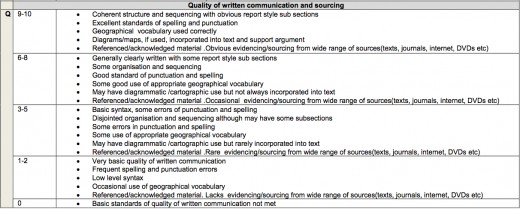
Key Points To Remember
- Take a few minutes to jot down a plan (you can get some marks for this).
- Throughout the report make sure you reference all facts and theories. Also remember that you don't have to include every source you reference in the text in the methodology as this would take too long.
- If you have time, re-read your work quickly and add in references where you have missed them or think there should be references.
- Use the Generic Mark Scheme.
- Use Examiners reports.
- Do not waffle, BE CONCISE
- Critically engage with the title
- Try to make the piece convincing/persuasive.
- Have your methodology memorised (and put it between the Intro and Discussion - not at the end).
- Remember that the case studies you use have to be relevant to the question so you will likely have to refer to the ones you have learnt to more or less degrees or not at all.
- Don't be afraid to use language from the Generic Mark Scheme in your report, this only makes it easier for the examiner to give you marks.
- To create logical sequencing, use a linking sentence at the bottom of each section/sub-section
- Keep looking back at the question to check that what you are writing is relevant. This can be helped by re-using terms from the question throughout your answer.
- Finally. Remember that on results day if you strongly feel that you haven't got all the marks you deserve then get a remark - I went up 7 UMS in an economics remark last year. (The remarkers will be the Chief Examiners, so will know exactly where they want marks to be given).
Revision Books / Resources I Would Recommend
I would recommend taking at look at these on Amazon and perhaps ask your teacher if they have a copy or buy one for yourself - Best prices on amazon
More Info / Discussion
If you would like any more information that I may have left out or would like to discuss the topic and the exam then please feel free to leave a comment and I will respond as best I can.
Marks For Each Section
On the top right of page 3 it is stated what marks I achieved for each section.
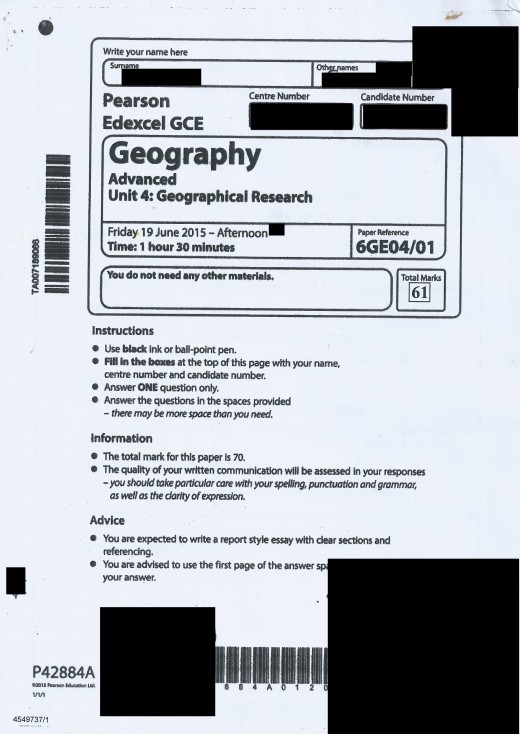
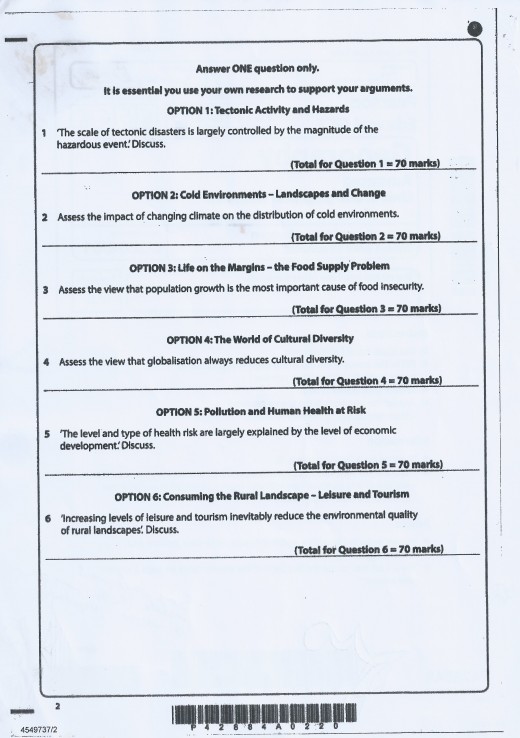

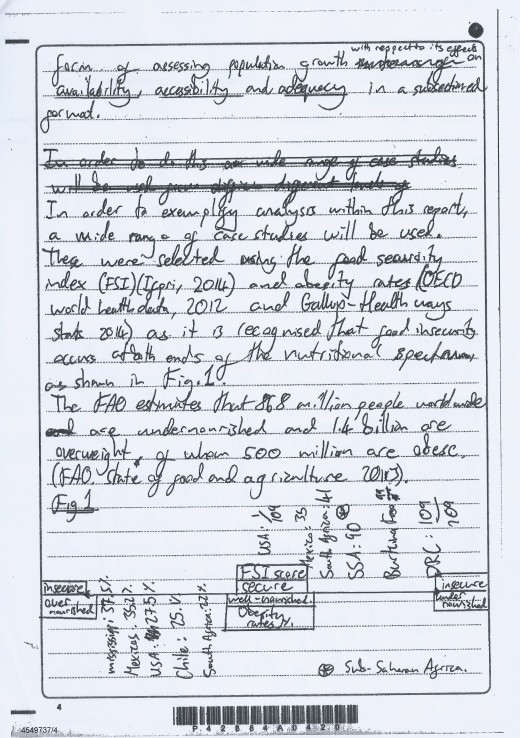

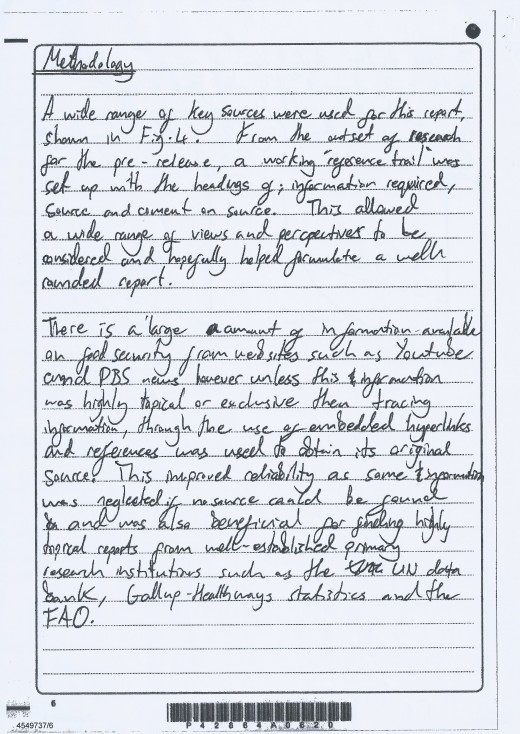
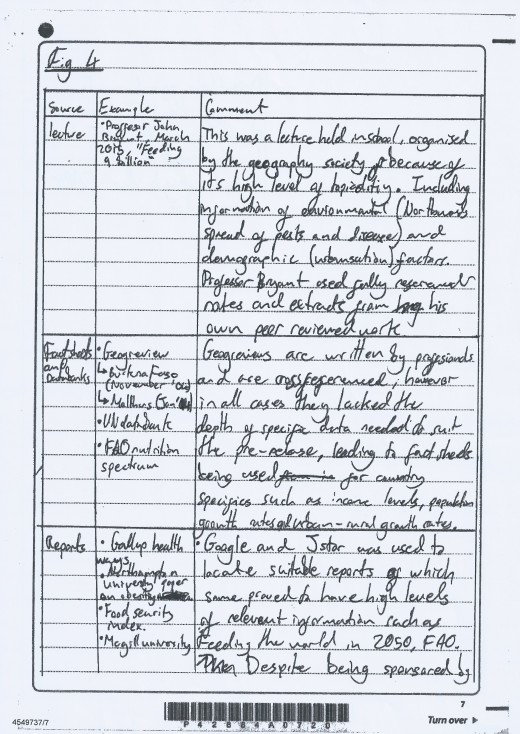
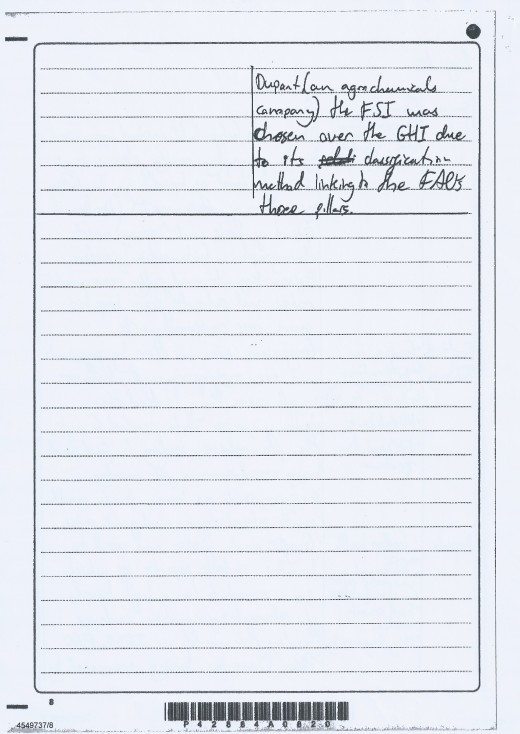
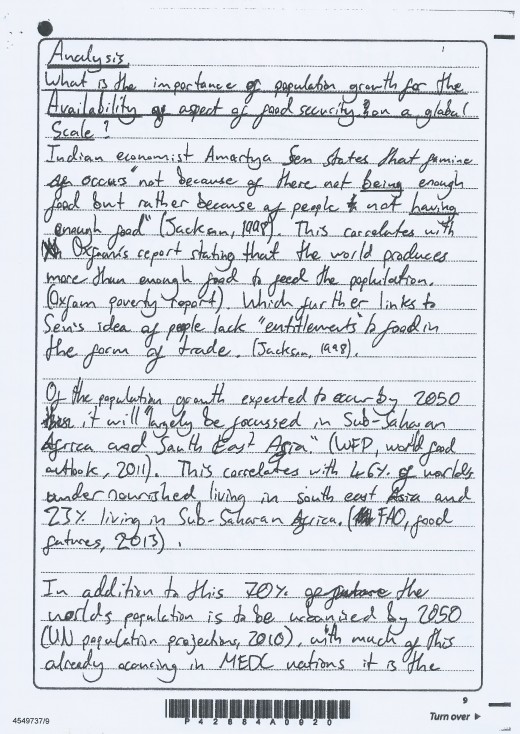
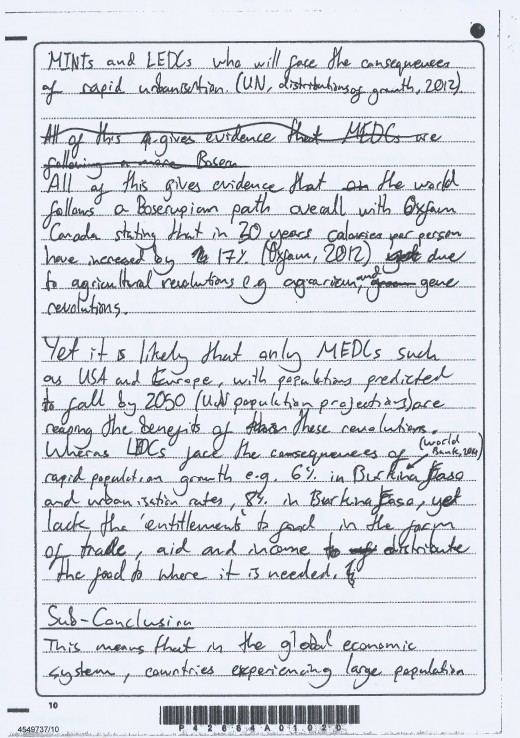

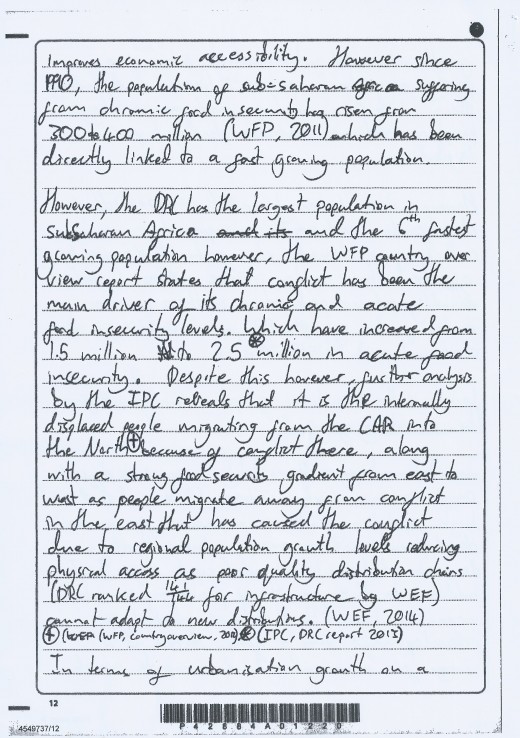
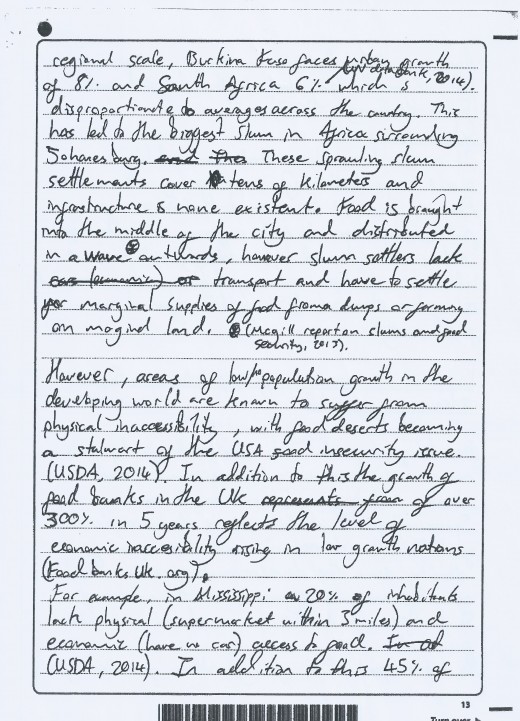
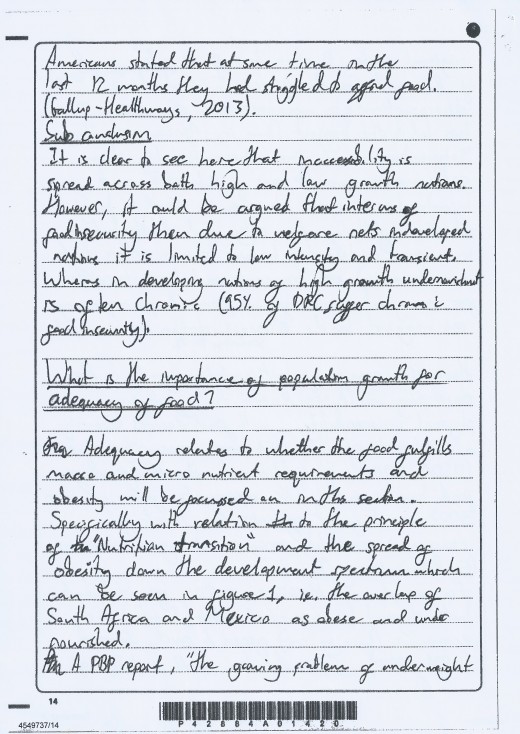
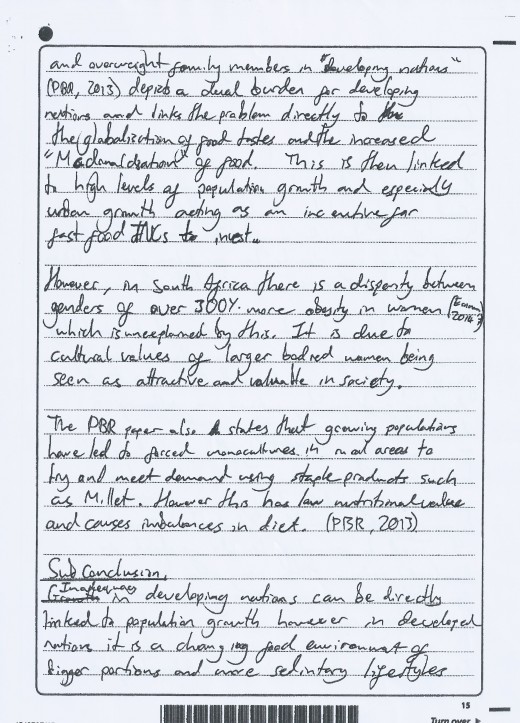
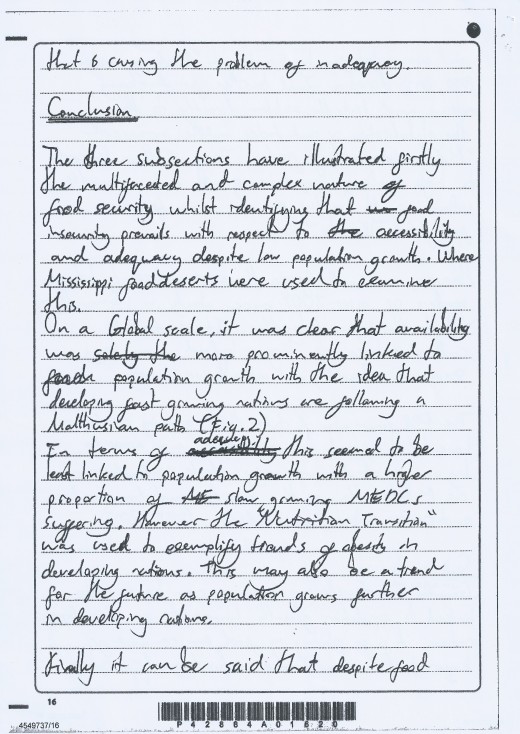
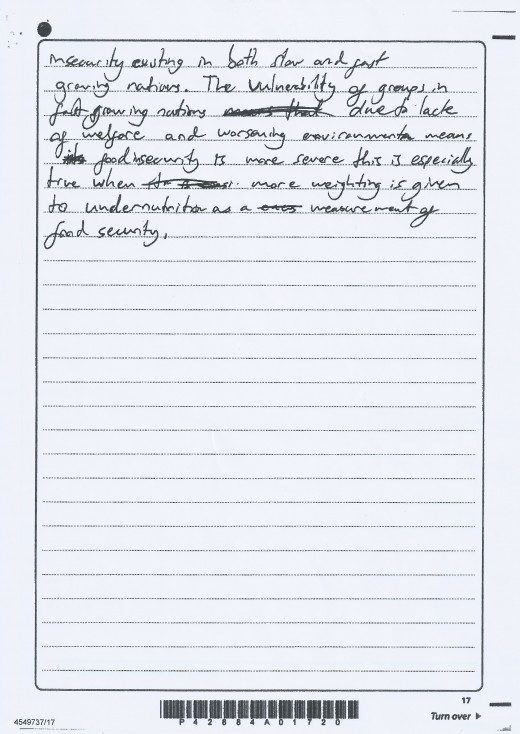
Future of Food: Food Security in an Insecure World
Feeding Nine Billion
Global Food Security (Matt Damon)
Just A Quick Poll
How many of you found this useful and would like to see similar posts?
© 2016 ReadersDigress










